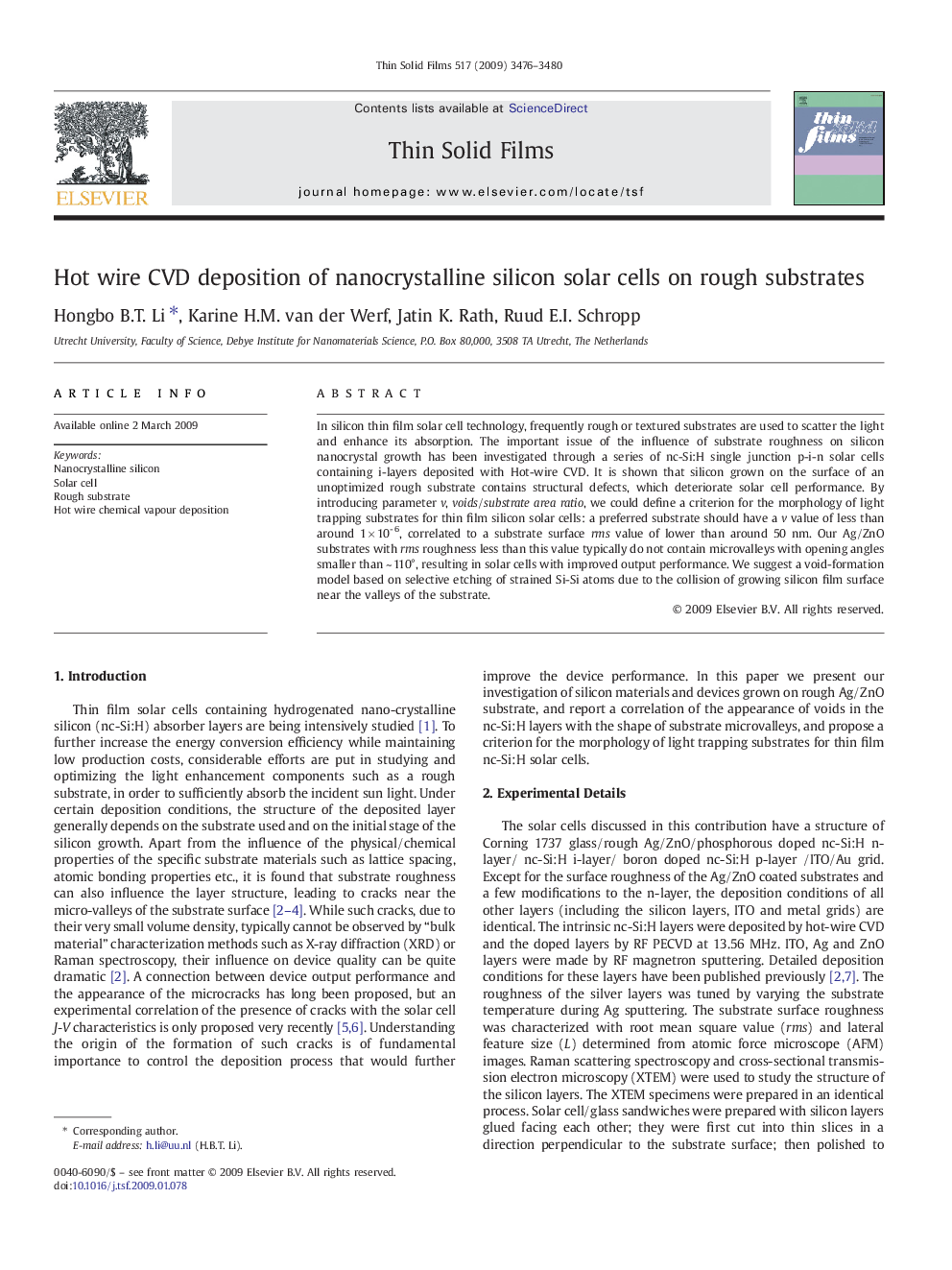| Article ID | Journal | Published Year | Pages | File Type |
|---|---|---|---|---|
| 1673725 | Thin Solid Films | 2009 | 5 Pages |
In silicon thin film solar cell technology, frequently rough or textured substrates are used to scatter the light and enhance its absorption. The important issue of the influence of substrate roughness on silicon nanocrystal growth has been investigated through a series of nc-Si:H single junction p-i-n solar cells containing i-layers deposited with Hot-wire CVD. It is shown that silicon grown on the surface of an unoptimized rough substrate contains structural defects, which deteriorate solar cell performance. By introducing parameter v, voids/substrate area ratio, we could define a criterion for the morphology of light trapping substrates for thin film silicon solar cells: a preferred substrate should have a v value of less than around 1 × 10- 6, correlated to a substrate surface rms value of lower than around 50 nm. Our Ag/ZnO substrates with rms roughness less than this value typically do not contain microvalleys with opening angles smaller than ~ 110°, resulting in solar cells with improved output performance. We suggest a void-formation model based on selective etching of strained Si-Si atoms due to the collision of growing silicon film surface near the valleys of the substrate.
